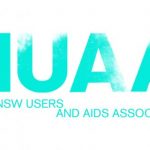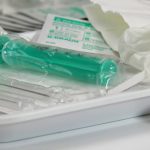Australia Pioneered Drug Harm Reduction and Must Continue

Programs, strategies and policies designed to prevent or reduce the harms associated with the use of illicit substances are collectively known as harm reduction. This approach to drug use has been a key pillar of Australia’s National Drug Strategy since its first iteration in 1985.
With the HIV/AIDS crisis looming in the mid-80s, it became apparent that punitive measures towards people who use drugs weren’t going to protect the community against the threat of the deadly virus. And this danger is what brought harm reduction to the fore in this country.
Campaigns to secure greater access to sterile injecting equipment, which were run by medical professionals and people who use drugs, resulted in the government acknowledging that despite their illegality, drugs are still taken and it had a responsibility to minimise these adverse effects.
However, conservative forces back then, as now, argue that implementing programs that reduce the risks of drug use encourages the increased consumption of these substances. This is despite the evidence showing that contact with these programs actually has the opposite effect.
And the mobilisation of people who use drugs whilst working to instigate harm reduction initiatives has led to the recognition that their rights and health should be protected. Indeed, drug-related harms can even affect one-off experimenters.
Curbing an even greater tragedy
“Harking back to those early days, we knew it wasn’t necessarily people who had developed a dependency on a substance that were at risk,” recalled Julie Bates, patron of Harm Reduction Australia, but it was also “people who might pick up a syringe just once and use and share.”
Those people might have no reliance on an illicit drug, but they could be left to face a shortened life living with HIV, she told Sydney Criminal Lawyers®. “And in those early days, for many, once a person was diagnosed with an AIDS defining condition and their immune system was defeated, it was often a quick but extraordinarily painful death without adequate treatment.”
In 1986, Bates was part of a group that later became the NSW Users and AIDS Association (NUAA). They consulted with Dr Alex Wodak, then director of the Alcohol and Drug Service at Sydney’s St Vincent Hospital, about an illegal pilot needle and syringe program (NSP) he was setting up.
Dr Wodak was aware of the threat HIV posed for people who injected drugs and the potential it then had to spread throughout the wider population. An act of civil disobedience, the Darlinghurst needle exchange gained the support of police and soon after the NSW government legalised NSPs.
Today, there are over 800 NSP locations across the nation, supplying around 30 million needle and syringes annually. And this program has led the HIV infection rate amongst people who inject drugs in this country to remain at around 1 percent, while in some other nations it’s as high as 50 percent.
The first in the English-speaking world
Dr Wodak, currently president of the Australian Drug Law Reform Foundation, was also amongst a group of community leaders that got the trial of a safe injecting facility in Kings Cross on the Carr government’s agenda.
At the time the Uniting Medically Supervised Injecting Centre opened in May 2001, there was a heroin overdose epidemic underway in the Cross. And in the time since, the facility has prevented over 6,000 potentially fatal overdoses.
As medical director of the facility Dr Marianne Jauncey has explained there’s never been a fatal overdose at any of the 90-odd safe injecting facilities around the world. But, despite this resounding success, calls for a second injecting centre in southwest Sydney continue to fall on deaf ears.
However, after a decade long battle in Melbourne’s North Richmond, the Andrews government announced last October that a trial of an injecting facility will begin this year. At present, the local area is going through a similar overdose crisis as the Cross was at the turn of the century.
An enlightened approach
Most people who use illicit substances don’t develop long-term issues. But, as Ms Bates pointed out, it doesn’t have to be those who develop a dependency that can suffer preventable drug harms.
The music festival scene is an example of a large group of people, of whom the majority only take drugs in a social or event type setting. But these people, due to the unknown content of their drugs, risk death in taking them, even though the substance they think they’re taking shouldn’t prove fatal.
Finally, in late April, Australia’s first government-sanctioned pill testing trial took place at the Groovin’ the Moo festival in Canberra. Amongst the samples taken from participants, two pills were found to contain a lethal substance, meaning two lives were potentially saved.
Harm Reduction Australia president Gino Vumbaca told the Canberra Times that following the trial’s success, more will take place. His organisation was amongst the STA-SAFE consortium that carried out the trial of a service that’s proven beneficial in European countries for decades now.
And Mr Vumbaca’s opinion about the likely continuation of the pill testing in Australia is one to pay attention to, as he was amongst those who volunteered to help conduct the illegal pilot NSP trial initiated by Dr Wodak back in 1986.
The risks increase inside
A major blind spot of the nation’s needle and syringe program is that prisons are excluded. While it’s common knowledge that illicit substances are used in prisons, there’s absolutely no provision to cut down the risk of transferring blood-borne diseases within this confined population.
Penington Institute chief executive John Ryan explained that needle sharing is rife in gaol and there are high rates of hepatitis C. “It’s really a message from the community that we don’t actually consider prisoner health to be worthy of our care and consideration,” he said last December.
But, if this is true, the wider community ought to consider that the overwhelming majority of inmates don’t stay inside. Most prisoners are released back into the community, with the potential to further spread blood-borne viruses, as well as pass on dodgy drug taking methods.
Removing the major harm
Drug law reformists often put forth that most major harms associated with illicit drug use are due to their prohibition. The risk of arrest, the social stigma and the unknown quantity of what is begin consumed are all aspects of drug taking caused by their illegality.
Under a legal and regulated market, an adult could make an informed decision to purchase some drugs. They’d be made aware of the quality-controlled contents on the side of the plain packaging and the police wouldn’t arrest them on their way out of the store.
And if an individual did happen to develop dependency issues, well, they could go to a doctor without fear of incarceration or social ruin.
To many the idea that prohibition, along with the war on drugs, might be coming to an end is hard to imagine. But, as INPUD executive director Judy Chang made clear last month “the arcs of history show that prohibition is not the status quo.”
But if the war ceases and a legal and regulated drug market is established not all harm reduction would become obsolete. Just look at alcohol, there’s random breath testing, the restrictions on its availability, as well as the provision of counselling services for those who find it problematic.







